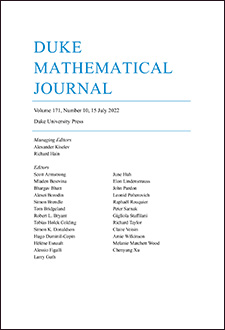Abstract
We provide the first tight bounds on the lower tail probability of the one-point distribution of the Kardar–Parisi–Zhang (KPZ) equation with narrow wedge initial data. Our bounds hold for all sufficiently large times and demonstrates a crossover between superexponential decay with exponent (and leading prefactor ) for tail depth greater than , and exponent (with leading prefactor at least ) for tail depth less than .
Citation
Ivan Corwin. Promit Ghosal. "Lower tail of the KPZ equation." Duke Math. J. 169 (7) 1329 - 1395, 15 May 2020. https://doi.org/10.1215/00127094-2019-0079
Information





